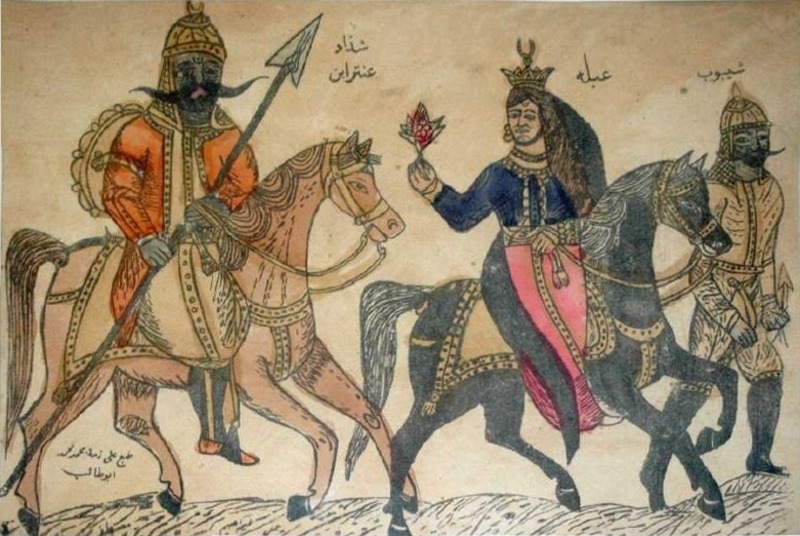Fitxer:Antarah ibn Shaddad & Abla.jpg
Antarah_ibn_Shaddad_&_Abla.jpg (800 × 536 píxels, mida del fitxer: 137 Ko, tipus MIME: image/jpeg)
Historial del fitxer
Cliqueu una data/hora per veure el fitxer tal com era aleshores.
| Data/hora | Miniatura | Dimensions | Usuari/a | Comentari | |
|---|---|---|---|---|---|
| actual | 20:58, 22 gen 2014 |  | 800 × 536 (137 Ko) | Carnby | Better crop |
| 06:01, 29 març 2009 |  | 777 × 517 (115 Ko) | BomBom | cropped image borders | |
| 00:48, 16 feb 2009 |  | 800 × 536 (129 Ko) | BomBom | {{Information |Description=A 19th-century tattoing pattern depicting pre-Islamic Arab hero and poet Antarah ibn Shaddad (left) and his lover Abla (middle) riding horses. The character on the right is called Shayyoub. The inscript |
Ús del fitxer
Les 2 pàgines següents utilitzen aquest fitxer:
Ús global del fitxer
Utilització d'aquest fitxer en altres wikis:
- Utilització a ar.wikipedia.org
- شعر عربي
- عنترة بن شداد
- خط الرقعة
- أدب عربي
- ألف ليلة وليلة
- غزل (شعر)
- موسيقى عربية
- حمارة القايلة
- طرب أندلسي
- ثقافة العراق
- عبلة بنت مالك
- حماسة (شعر)
- عصور الأدب العربي
- قالب:ثقافة عربية
- سجاد عربي
- عنترة (مسرحية)
- شيبوب بن شداد
- ثقافة عربية
- مراسم الزواج عند العرب
- مطبخ عربي
- جاز شرقي
- أدب الملحمة العربية
- مستخدم:محمد رشاد ابوالنجا/ملعب12
- فن نبطي
- مستخدم:عمر/ملعب 3
- الفروسية في التاريخ الإسلامي
- مستخدم:EgyAbodggg5g70868
- رموز الشرف عند البدو
- الفن الفاطمي
- جوامع اللذة (موسوعة تراثية)
- مقام (مزار)
- مستخدم:عمر/معلب 4
- قالب:تصفح مقالات مشروع العلمانية والمساواة
- ويكيبيديا:العلمانية والمساواة
- نثر مقفى
- Utilització a arz.wikipedia.org
- Utilització a az.wikipedia.org
- Utilització a bn.wikipedia.org
- Utilització a bs.wikipedia.org
- Utilització a da.wikipedia.org
- Utilització a de.wikipedia.org
- Utilització a en.wikipedia.org
Vegeu més usos globals d'aquest fitxer.



